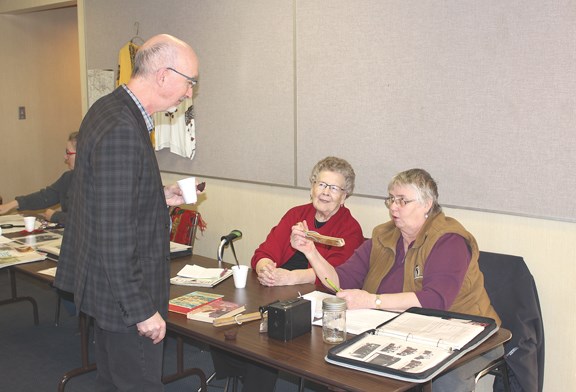The typical vision of a museum as a building inside which historic items are stored and displayed is changing.
There is increasing interest in the idea of ecomuseums, Dr. Glenn Sutter, curator of human ecology at the Royal Saskatchewan Museum, told those attending the Heritage Day at the Yorkton branch of the Western Development Museum on Sunday.
For a definition of ecomuseums, Heritage Saskatchewan detailed what they are.
“Sometimes called ‘museums without walls,’ ecomuseums are locally-run community museums that foster sustainable forms of social and economic development based on in situ conservation and interpretation of natural and cultural heritage,” details www.heritagesask.ca. The ecomuseum model was developed in France in the early 1970s to foster holistic interpretations of cultural heritage. The aim was to combine tangible objects, sites, and built structures with the traditions, practices, and customs associated with intangible cultural heritage (ICH), also known as “living heritage.” As the idea caught on, the model was broadened to include natural heritage, including local flora and fauna, important wildlife habitats and geomorphology sites.”
Sutter said in their simplest sense they are museums which are created in combination with the local ecology.
While existing worldwide for many years, Sutter said local interest is just beginning to take off.
“There’s growing interest in Saskatchewan,” he said, adding only four have officially gotten off the ground to-date, but as of last June a half dozen other projects were being looked into, including interest at Saltcoats.
Sutter said typically the history or heritage of a place is integral to the creation of ecomuseums.
“These things have to start with a memory,” he said.
That memory, typically centred on a place, becomes the centre of the area the ecomuseum encompasses.
That said, the actual historic centre is left as realistic to its heritage as possible.
“Ecomuseums leave things where they are,” he said. As an example, Sutter said graveyards can be part of an ecomuseum in terms of heritage, but obviously can’t be moved into a building.
Since it builds on a local heritage or history, Sutter said ecomuseums can became “a mirror the local population uses to discover its own image.”
It is also a coming together with the community via “an agreement by which a local community takes care of a place … It’s pretty interesting in the sense of how we understand ourselves.”
Overtime the ecomuseum looks to fulfill immediate local needs in areas such as heritage preservation, tourism, economic development and improvement of quality of life, but must also factor in the needs of the future, suggested Sutter.
“The needs of the next generation … it has to meet those needs too,” he said.



